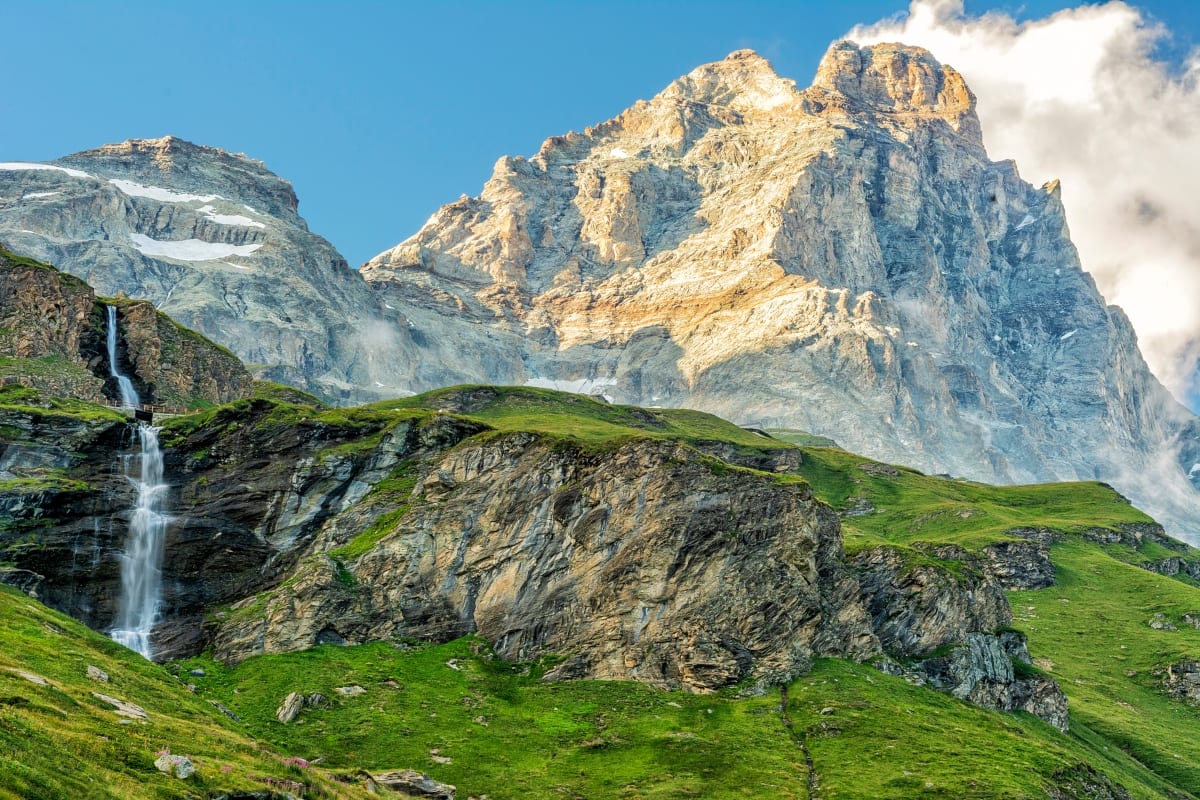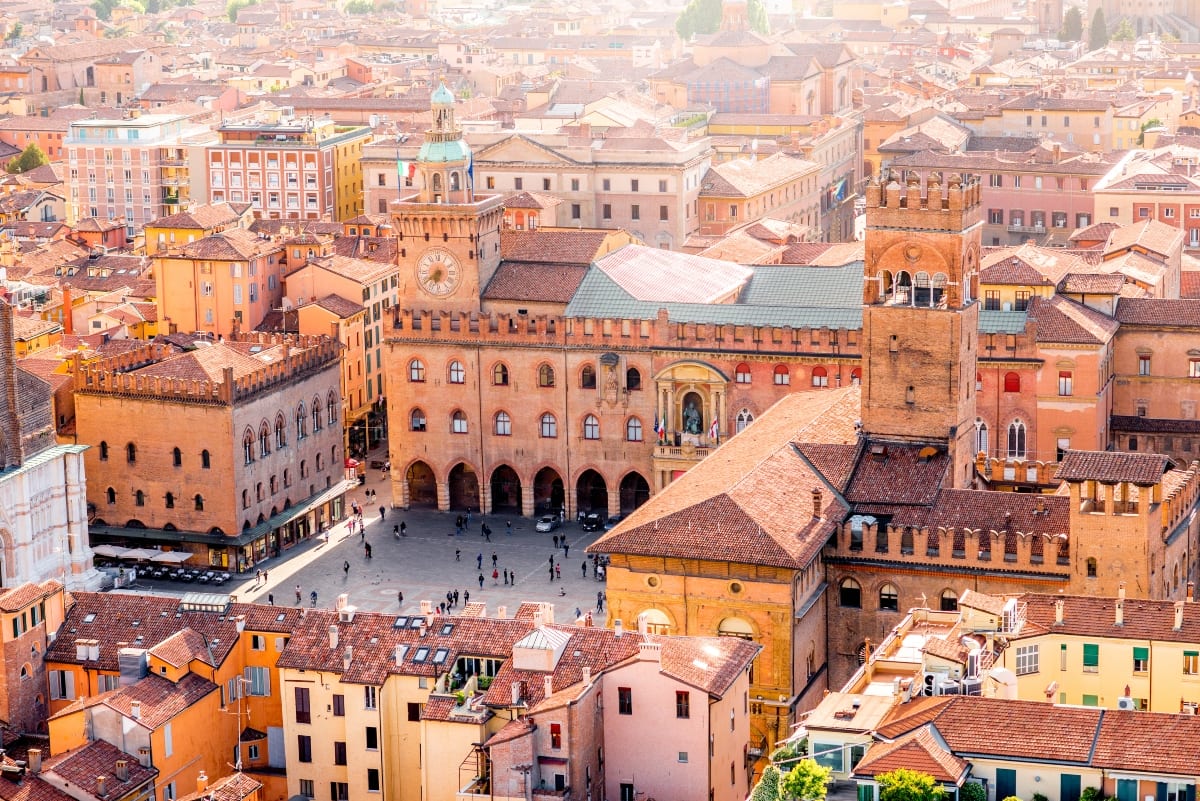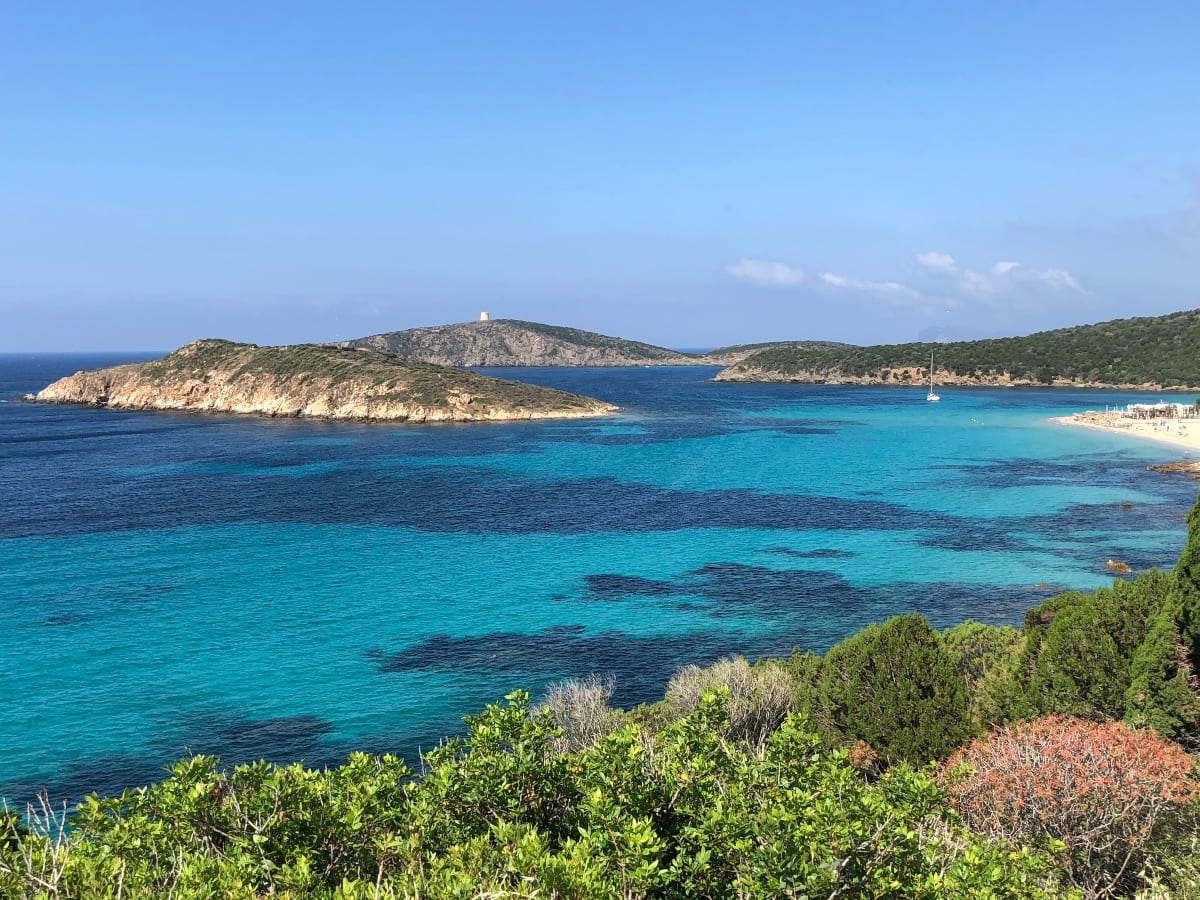Off-the-Beaten-Path Italy: New Places to Explore with Kids
- May 7, 2020
- 9 Min Read
Larger-than-life tourist destinations like Rome, Florence and Tuscany get plenty of attention from families planning a trip to Italy. As amazing as these locales are, the country has tons more to offer — from lesser-traveled golden beaches and unspoiled nature preserves to Roman ruins and spectacular archaeological sites. Let this travel guide inspire you to uncover the best of off-the-beaten-path Italy, including the Aosta Valley, Emilia-Romagna, Umbria, Basilicata and Sardinia.
Any of these regions would be a memorable anchor for an Italian family holiday. Leave the crowds behind and satisfy your family’s wanderlust for an authentic taste of la dolce vita in places overflowing with natural beauty, fascinating culture and tantalizing local food and wine — not to mention wallet-friendly pricing. We’ve listed the regions from north to south for ease of geographic reference (with Sardinia just a stone’s throw west off the mainland).

Off-the-Beaten-Path Italy Family Vacation Ideas
Aosta Valley
Where it is: The Aosta Valley, a.k.a. Valle d’Aosta, shares the Alps with Switzerland to the north and France to the west. At its southernmost, the region (Italy’s smallest) borders the Piedmont.
Why go: Known for snow-capped Alpine peaks such as Monte Rosa and Gran Paradiso, the Aosta Valley boasts major ski resorts including Courmayeur, La Thuile and Cervinia. The region’s countryside is dotted with medieval castles and fortresses begging to be explored.
What to do: The central town of Aosta dates back to Roman times. Interesting ruins are scattered about, including the Roman Theater and the Arco d’Augusta (honoring Augustus, who gave the town its original name of Augusta Praetoria). Don’t miss the well-preserved towers in the town walls of Augusta Praetoria Salassorum and make sure to stop in the main piazza for a visit to Caffe Nazionale, one of Italy’s most historic cafes. Older kids and teens will be intrigued by the underground tunnels of Criptoportico Forense. This Roman-era site includes well-lit dungeons to scout, though no one is exactly sure what the tunnels were used for. Note: no strollers or backpacks are allowed.
Outdoor activities are central to the allure of the Aosta Valley. Gran Paradiso, Italy’s first national park, offers something for all seasons, from hiking and trekking to cross-country skiing. Canyon and hike in the shadow of Mont Blanc or unplug on one of the many walking routes around the Alpine lake trails. From April to September, you can even try whitewater rafting. If cycling is your family’s thing, La Thuile offers more than a dozen cross-country mountain bike routes between Italy and France and another 16 downhill routes served by chair lifts that can transport bikes.
Other highlights of the area are the medieval castles east of Aosta, including 14th-century Castello Fénis and Castello di Verrès. Parents will also appreciate the Aosta Valley wine route and the spa at Pre-Saint-Didier.
Typical foods: The Aosta Valley is known for fresh ingredients indigenous to its mountain terrain. Think cream and cheese from local cows, mushrooms, fish and beef.
Travel tips: Turin is the closest airport. This area is best traveled by car, and the region pairs well with a visit to the Piedmont. Or build in time for France (Mont Blanc and Chamonix are nearby) and Switzerland (Geneva and Lausanne are only an hour farther west and north, respectively).
Want help planning a vacation to Italy with kids?
We're ready when you are! Our Family Travel Advisors can help you book vetted accommodations, craft a custom itinerary, arrange private tours and excursions, and more. Click to send us a request.

Emilia-Romagna
Where it is: Emilia-Romagna is nestled between Florence and Milan.
Why go: Emilia-Romagna is a proud area, rich with history and culture that swirls around food and fast cars. If that’s not enough, head east for the sandy beaches on the Adriatic coast.
What to do: This region has more than its fair share of historic cities including Bologna, Ravenna and Modena. Bologna, the capital of the region, is a photographer’s delight with the most extensive series of porticos in the world (which serve as the backdrop to the city’s famous outdoor movie festival). Ravenna is noted for its eight UNESCO World Heritage sites, including the Basilica di San Vitale and the mosaics at Mausoleo di Galla Placidia as well as the Mausoleum di Teodorica, a 6th-century tomb for a king.
Emilia-Romagna, sometimes called Motor Valley, has great ties to the automobile industry as the home of Ferrari, Maserati and Ducati. Visit Casa Enzo Ferrari Museum in Modena, perhaps with a pit stop for some balsamic tasting, or venture to the Ferrari museum in Maranello.
Comacchio, a tiny town known as “Little Venice” for its canals, is home to the nearby Po Delta nature park and its flamingos. Cesenatico is a tiny beach town with canals designed by Leonardo da Vinci as well as a maritime museum. The biggest tourist draw in the region is Rimini, the Adriatic beach town that beckons holiday seekers with white sandy beaches, plentiful cafes, restaurants and a historic town center. For nature pursuits, head to Bagno di Romana and the Casentinesi Forest National Park.
Typical foods: Emilia-Romagna is a food lover’s paradise. Home of Parmigiano-Reggiano cheese and Balsamico di Modena (the namesake balsamic vinegar), it is also the birthplace of FICO, the world’s first food theme park.
Travel tips: Emilia-Romagna is about an hour and a half north of Florence by car; trains between Florence and Bologna take around 40 minutes. The slower pace of the region is a great antidote to the hustle and bustle of Florence.

Umbria
Where it is: Umbria sits in the very heart of Italy, with Tuscany to the west and north and Lazio to the south.
Why go: Umbria has a little bit of everything – scenic landscapes, traditions, history, culinary delights and culture. The area offers charming hill towns and villages similar to those in Tuscany, but without the crowds.
What to do: Perugia is the capital of the region and is known around the world for its chocolate. Visit the Perugina chocolate factory, learn how they make baci (hazelnut-filled kisses) and try your hand at chocolate-making in one of their workshops. Leave time to explore the Renaissance fortress Rocco Paolina in Perugia and then unwind at the cafes and boutiques along Corso Vannucci.
Assisi, of St. Francis fame, is another town worth visiting. In addition to sites related to the saint, it’s worthwhile for the Giotto frescoes at Basilica di San Francesco and the largely intact Roman Tempio di Minerva and Roman Forum. Outside Assisi, stop at medieval Rocco Maggiore for sweeping views across Umbria.
The quaint medieval walled hill town of Spoleto makes for a memorable day out (and tired legs will be happy for the mechanized sidewalks up to street level). Ponte del Torri, the arched bridge that spans the gorge on one side of town, is particularly amazing and you can take a guided tour of the Rocco, or fortress. If you happen to be in Spoleto during the summer, don’t miss the world-famous music and arts festival. With more time, a visit to the dazzling hill town of Orvieto makes for a rewarding day trip.
Typical foods: Umbria is famous for specialty foods like aged prosciutto, salami, olive oil and saffron. It is also the largest truffle-producing area in Italy. Look for the signature Umbrian pasta shape stringozzi, which looks like a long, squared-off shoelace with a rougher texture than spaghetti.
Travel tips: Umbria is only a couple of hours from both Rome and Florence and plays well with a visit to either city.

Basilicata
Where it is: Basilicata is located in southern Italy, bordering Campania to the west, Apulia to the north and east and Calabria to the south. It has two coastlines, one along the Tyrrhenian Sea and one along the Gulf of Taranto. If you are picturing the “boot” of Italy, Basilicata is the arch and instep.
Why go: Basilicata has inviting weather, fine food, ancient towns and sandy beaches. It is not well served by public transport, so has remained largely off the map, making tourists all the more welcome and appreciated.
What to do: We suggest basing in either Maratea, on the west coast on the Tyrennhian Sea, or Matera. Note, Basilicata is a large region and these towns are more than two and half hours apart.
Maratea is known for its white Christ the Redeemer statue perched above the coast, and it is a pleasant town for exploring. You can also take a boat to visit the uninhabited Dino Island and its sea caves. Nearby Acquafredda is a hidden gem with a series of steep cliffs, caves and beaches that are fed by fresh water, some of which are only reachable by sea.
Matera is famous for its sassi (cave houses), thought to be the first dwellings in Italy and created 9,000-plus years ago. There are more than 150 rock-cut churches at this UNESCO World Heritage site, which was named the 2019 European Capital of Culture and is often used as the backdrop for movies. Older kids and teens will appreciate the Palombaro Lungo, a series of incredibly steep tanks dug in the 1800s to keep Matera supplied with water.
Adventure seekers will be thrilled with a day trip to Pietrapertosa, the highest village in the region, along with its nearby Il Volo del Angelo, a zip line in Castelmezzano where riders lie prone.
Typical foods: Kids will enjoy Matera bread, known for its crusty exterior and soft, flavorful inside. Another local treat is Caciocavallo Podolico, a nutty cow’s milk cheese that is often served drizzled with chestnut honey. If you are feeling super adventurous, grilled carne di cavallo (horse meat) is a Matera delicacy. Or just opt for the popular local cavatelli pasta, shaped like mini hot dog buns.
Travel tips: Basilicata is a few hours’ drive from Naples and could easily be combined with a visit to the ruins of Pompeii or the well-traveled Amalfi Coast.

Sardinia
Where it is: The island of Sardinia lies west of mainland Italy and is the largest island in the Mediterranean.
Why go: Sardinia is known for its unspoiled beauty, with mountainous terrain and hiking trails bordered by white-sand beaches and crystalline water.
What to do: Base in Alghero in the northwest part of the island or the capital of Cagliari in the south, roughly two and a half hours apart. Alghero is known for its fascinating nuraghe, Bronze Age ruins shaped like beehives. The most popular are found an hour east of Alghero in Santu Antine. Another highlight of the Alghero area is Neptune’s Grotto, a network of caves and grottos that can be explored on foot or by a guided ferry tour. (The grotto can be reached by 600 rock stairs down the face of the cliff, but if you have young kids, we suggest taking the ferry from Alghero.)
In Alghero, La Ragnatele Adventure Park is a true find for intrepid families: treetop rope ladders, bridges and trails. On the northwest tip of Sardinia sits Asinara, a popular national park perfect for a day trip. Kids will delight in its legendary past as a leper’s colony and then a prison.
Centered at the very bottom of Sardinia, Cagliari and features golden buildings and sweeping views from the hilltop castello district. Cagliari is also known for its sandy beaches. The Poetto coastline rises to the top of the list for its pleasing 5-mile beach filled with cafes and restaurants. A true highlight of the region is the chance to explore the more rugged southeast countryside by the Trenino Verde, a narrow-gauge train that peels back the curtain to areas that would otherwise be inaccessible and offers a glimpse of Sardinia exactly as it has been for the past 100 years. Visitors rave about La Giara di Gesturi, a volcanic plateau along the route that is home to Europe’s last remaining wild horses.
Farther west, kids will love running up and down the sand dunes of Piscinas, the highest dunes in Europe. Another unique archaeological feature of the region is Le Grotte Is Zuddas, helictite cave structures formed by wind in the cave blowing drops off of the stalactites which were formed over 530 million years ago.
If you have more time, consider touring the tony Costa Smerelda (Emerald Coast) beaches of the northeast, including nearby Palau and Porto Pollo. Visitors also tout the beauty of the Costa Verde (Green Coast) on the southwest portion of the island and the Sinis peninsula slightly faurther north, known for its salt lakes and pink flamingos.
Typical foods: Seafood is the name of the game in Sardinia. Alghero in particular is famed for its lobster, and “Sardinian octopus” is a popular salad made with potatoes, celery and garlic. Look for the regional pasta called fregola that resembles giant couscous. In Cagliari, make sure to try pizzetta sfoglia, a round pizza-type snack with a flaky crust. And don’t miss the gooey seadas — cheese-stuffed, citrus scented dough that is deep fried and bathed in honey. Yum!
Travel tips: Sardinia combines easily with time spent in Rome. Flights from Rome to Cagliari take about 40 minutes and run multiple times a day. You could also take the car ferry from Civitavecchia, but going by air is easier as the journey by sea will take about 7 hours.
Relevant Links:
Browse all family-friendly accommodations and activities in Italy on Ciao Bambino
52 things to know before traveling to Italy with kids
10 tips for travel to Italy with kids
Umbria: Italy’s green heart beats for kids
Endless ways for families to play at Sardinia’s beachside Forte Village Resort
Photos by Amie O’Shaughnessy except where noted.
Editor’s note: This post was accurate when published. We advise checking independently for the latest information and updates. Ciao Bambino does not accept responsibility or liability for any errors or omissions in, or for any actions taken based on, the information presented.






 travel recommendations, inspiring adventures, and exclusive travel offers
travel recommendations, inspiring adventures, and exclusive travel offers
First hand experience here- Sardinia should be on everyone’s list! The most beautiful beaches and water in the world here!